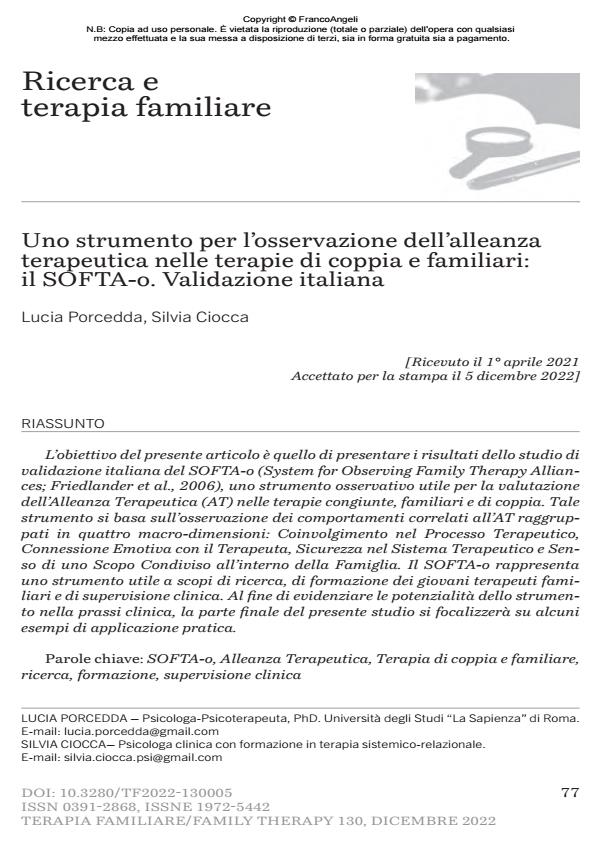A strument to observing therapeutic alliance in couple and family therapy: SOFTA-o. Italian validation
Journal title TERAPIA FAMILIARE
Author/s Lucia Porcedda
Publishing Year 2023 Issue 2022/130
Language Italian Pages 20 P. 77-96 File size 728 KB
DOI 10.3280/TF2022-130005
DOI is like a bar code for intellectual property: to have more infomation
click here
Below, you can see the article first page
If you want to buy this article in PDF format, you can do it, following the instructions to buy download credits

FrancoAngeli is member of Publishers International Linking Association, Inc (PILA), a not-for-profit association which run the CrossRef service enabling links to and from online scholarly content.
The aim of this article is to share the Italian validation of the SOFTA-o (System for Observing Family Therapy Alliances; Friedlander et al., 2006), an observational rating system of the Therapeutic Alliance (TA) in conjoint therapy, family and couple therapy. This observing system contains the alliance-related behaviors clustered in four macro-dimensions: Engagement in the Therapeutic Process; Emotional Connection with the Therapist, Safety within the Therapeutic System, Shared Sense of Purpose within the Family. The SOFTA-o is useful for research, training and supervision. In the final part of this article, we highlight the clinical usefulness with some examples of application.
Keywords: SOFTA-o, Therapeutic Alliance, Couple and family therapy, Re- search, Training, Clinical supervision.
Lucia Porcedda, Uno strumento per l’osservazione dell’alleanza terapeutica nelle terapie di coppia e familiari: il SOFTA-o. Validazione italiana in "TERAPIA FAMILIARE" 130/2022, pp 77-96, DOI: 10.3280/TF2022-130005